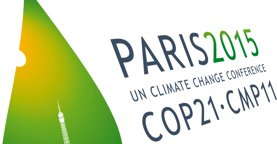Looking ahead to COP21: Countries vs. Businesses
 It’s hard to remember a year that could potentially be more pivotal for international climate change talks than 2015. Years of international negotiations trying to repair the perceived collapse of 2009’s climate talks in Copenhagen will culminate this December in Paris for the UNFCCC’s 21st Conference of the Parties (COP21).
It’s hard to remember a year that could potentially be more pivotal for international climate change talks than 2015. Years of international negotiations trying to repair the perceived collapse of 2009’s climate talks in Copenhagen will culminate this December in Paris for the UNFCCC’s 21st Conference of the Parties (COP21).
The significance? It’s hoped that COP21 will secure a legally binding climate agreement to limit carbon emissions on a global scale beyond 2020. The opportunity is great but as the talks grow closer, what have countries already pledged and importantly, what is the role of business in COP21?
How are countries doing?
The core challenge of international policy setting is taking national priorities and circumstances into consideration when trying to agree actions for global issues. As the COP21 date draws closer, countries are required to report their Intended Nationally Determined Contribution to a new Climate Change Agreement so that these national circumstances are clearly understood. These INDCs[1] are communicated by each Party to the UNFCCC secretariat ahead of the COP21 and should publically outline what post-2020 climate actions each country intend to take under a new international agreement. The INDCs will underpin the COP21 discussions and whether a global commitment can shape a low-carbon future.
As INDCs continue to roll in –Djibouti, Democratic Republic of Congo and Dominican Republic being the most recent 27th 28th and 29th countries respectively to submit responses – the UNFCCC will begin to aggregate the responses. Ahead of a report to be published in November analysing the contributions, a World Resources Institute tool mapping the responses to date serves as a useful map to explore the responses so far
In a Greenstone blog in January 2015[2], we reflected on the importance of the individual commitments and communication between China and the United States. Under its INDC, China has committed to a number of actions by 2030, including “peaking of carbon dioxide emissions around 2030 and making best efforts to peak early” and “to lower carbon dioxide emissions per unit of GDP by 60% to 65% from the 2005 level”. On the other side of the world, the United States intends to achieve an economy-wide target of “reducing its greenhouse gas emissions by 26%-28% below its 2005 level in 2025 and to make best efforts to reduce its emissions by 28%”. Where the US has opted for a base year target, China has favoured intensity and trajectory targets for both GHG and non-GHG emissions. Both however have sent messages to the UNFCCC and the wider community that they have taken stock of their national circumstances ahead of the talks.
What are businesses doing?
Of course it is countries (referred to as Parties under the UNFCCC) that will play the primary role in reaching a global agreement on climate change. It’s expected that the official agreement to come out of the COP21 Conference will have components covering a legal agreement; a GHG emissions reduction commitment; an economic plan and a commitment plan from non-government groups.
There is however a key role for business to play in the talks. Importantly businesses can put pressure on the governments and decision makers who will be shaping the policy at COP21. Although not legally bound under international agreements, multi-national “big-big-businesses” can be key influencers and leaders in the international policy shaping landscape. Many are choosing to show their commitment through channels such as CDP (formally the Carbon Disclose Project) where they have an opportunity to outline what their business is doing in relation to COP21. For companies like Apple, being able to commit US$848 million to power their operations with solar power is an example of how big-big business is able to lead so others will follow. Other companies, such as IKEA, BT Group and H&M have committed to also using 100% renewable energy by defined target periods to show their proactive efforts to reduce their impact on the environment. More information about companies committing to renewable energy under the RE100 programme, can be found at our partner The Climate Group’s website
For those businesses unable to rapidly transition to a renewable energy supply, other pledges and actions can be committed to publically align operations with the goals of the COP21 talks. The We Mean Business[3] Coalition has been a key driving force in helping businesses to commit to actions using a common set of COP21 relevant actions. These include adopting a science-based emissions reduction target, putting a price on carbon and reducing short-lived climate pollutant emissions.
For many businesses, reporting on their environmental impacts is becoming the norm and year-on-year KPIs on sustainable practices and impacts are not only welcomed but more commonly expected from key stakeholders. Reporting climate change information in mainstream reporting and responsible corporate engagement in climate policy are two tangible actions organisations can take to align with practices and principles with the broader international climate change policy agenda.
As a business, taking actions that align with COP21 offers opportunities for creating growth, employment and greater prosperity in a low-carbon economy. Of course without commitment from countries within the UNFCCC sphere there will be no climate-resilient agreement in December, however, as businesses operating in an environmentally constrained context, there is a fundamental needs for unified pledges to take action towards preventing irreversible climate change.










